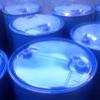| Anmol Chemicals is the pioneer manufacturers of Zinc Stearate USP NF BP Ph Eur, Pharmaceutical Excipients Food & Flavor chemicals in India. We offer Halal and Kosher Zinc Stearate USP NF BP Ph Eur made in an ISO9001, ISO22000 (FSSC22000) cGMP and GLP certified facility. Our group has several manufacturing facilities spread across the world, supported by toll manufacturers and representatives in UAE, Europe, USA, China and has several associated manufacturing facilities spread across India. All the Information on Physics, Chemistry, Applications, Uses and Technology on Manufacture of Zinc Stearate USP NF BP Ph Eur is in these pages. |
| The units in the group have one or more of the certifications like FDA GMP, ISO 9001, ISO 22000, HACCP, REACH, Kosher & Halal and DMF support is available. |




Zinc Stearate USP NF BP Ph Eur Manufacturers
CAS Number 557-05-1
Zinc Stearate USP NF BP Ph Eur SDS GHS, MSDS Sheet of Manufacturers
Specifications of Zinc Stearate USP grade:
Octadecanoic acid, zinc salt;
Zinc stearate CAS Number 557-05-1.
DEFINITION
Zinc Stearate is a compound of zinc with a mixture of solid organic acids obtained from fats and consists chiefly of variable proportions of zinc stearate and zinc palmitate. It contains the equivalent of NLT 12.5% and NMT 14.0% of ZnO.
IDENTIFICATION
A. Identification Tests General, Zinc:
Sample solution: Mix 25 g with 200 mL of hot water, add 60 mL of 2 N sulfuric acid, and boil until the fatty acids separate as a transparent layer. Cool the mixture, and remove the solidified layer of fatty acids.
Acceptance criteria: A portion of the water layer meets the requirements.
B. Congealing Temperature:
Analysis: Place the separated fatty acids obtained in Identification test A in a filter wetted with water, and wash with boiling water until free from sulfate. Collect the fatty acids in a small beaker, allow to cool, pour off the separated water, then melt the acids. Filter into a dry beaker while hot, and dry at 105° for 20 min.
Acceptance criteria: The fatty acids congeal at a temperature not below 54C.
Arsenic: NMT 1.5 ppm
Lead: NMT 10 ppm.
Alkalies and Alkaline Earths:
Sample solution: Mix 2.0 g with 50 mL of water and add 10 mL of hydrochloric acid. Boil until the solution is clear, filter while hot, and wash the separated fatty acids with about 50 mL of hot water. Render the combined filtrate and washings alkaline with 6 N ammonium hydroxide. Add ammonium sulfide to precipitate the zinc completely, dilute with water to 200 mL, mix, and filter.
Analysis: To 100 mL of the clear filtrate add 0.5 mL of sulfuric acid, evaporate to dryness, and ignite to constant weight.
Acceptance criteria: The weight of the residue does not exceed 10 mg (1.0%).
Specifications of Zinc Stearate BP Ph Eur Grade:
CAS 557-05-1
Action and use: Excipient.
DEFINITION
Zinc stearate [(C17H35COO)2Zn; Mr 632] may contain varying proportions of zinc palmitate [(C15H31COO)2Zn; Mr 576.2] and zinc oleate [(C17H33COO)2Zn; Mr 628].
Content: 10.0 per cent to 12.0 per cent of Zn.
CHARACTERS
Appearance: Light, white or almost white, amorphous powder, free from gritty particles.
Solubility: Practically insoluble in water and in anhydrous ethanol.
IDENTIFICATION
A. Freezing point: minimum 53C, determined on the residue obtained in the preparation of solution S (see Tests).
B. Neutralise 5 mL of solution S to red litmus paper with strong sodium hydroxide solution. The solution gives the reaction of zinc.
TESTS
Solution S: To 5.0 g add 50 mL of ether and 40 mL of a 7.5 per cent V/V solution of cadmium- and lead-free nitric acid in distilled water R. Heat under a reflux condenser until dissolution is complete. Allow to cool. In a separating funnel, separate the aqueous layer and shake the ether layer with 2 quantities, each of 4 mL, of distilled water. Combine the aqueous layers, wash with 15 mL of ether and heat on a water-bath until ether is completely eliminated. Allow to cool and dilute to 50 mL with distilled water (solution S). Evaporate the ether layer to dryness and dry the residue at 105C.
Appearance of solution: Solution S is not more intensely coloured than reference solution.
Appearance of solution of fatty acids: Dissolve 0.5 g of the residue obtained in the preparation of solution S in 10 mL of chloroform. The solution is clear and not more intensely coloured than reference solution5
Acidity or alkalinity: Shake 1.0 g with 5 mL of ethanol (96 per cent) and add 20 mL of carbon dioxide-free water and 0.1 mL of phenol red solution. Not more than 0.3 mL of 0.1 M hydrochloric acid or 0.1 mL of 0.1 M sodium hydroxide is required to change the colour of the indicator.
Acid value of the fatty acids: 195 to 210.
Chlorides: Maximum 250 ppm.
Sulfates: Maximum 0.6 per cent.
Cadmium: Maximum 5 ppm.
Lead: Maximum 25 ppm.
Zinc Stearate USP NF BP Ph Eur Manufacturers
Anmol Chemicals
S-8, SARIFA MANSION, 2ND FLANK ROAD, CHINCHBUNDER, MUMBAI 400009, INDIA
TEL: (OFFICE) 91-22-23770100, 23726950, 23774610, 23723564. FAX: 91-22-23728264
e-mail: anmolc@mtnl.net.in

Fracture Diverting Agent, Ferric Chloride Hexahydrate, Malic Acid, Skatole & Indole, Potassium Bicarbonate & Carbonate, Sodium Caprylate, Steartic Acid, Tartartric Acid
Exports to USA, Canada, UAE, Dubai, South Africa, Tanzania, Kenya, Nigeria, Egypt, Uganda, Turkey, Mexico, Brazil, Chile, Argentina, Europe Netherlands, Italy, Spain, Germany, Portugal, France, Malaysia, Indonesia, Thailand, Vietnam, Korea, Japan, etc.
Copyright and Usual Disclaimer is Applicable.